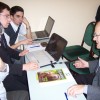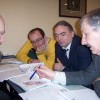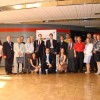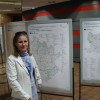National and International Projects 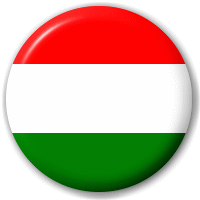
Our association has been involved in many projects, such as:
- OFA
- Parks & Economy
- Donauregionen
- Donauregionen+
- Datourway
- DaHar EU SEE
- V4 Standard
Participation in future projects:
- Donauregionen++
- Danube Region Project Fund
- V4
- EU SEE és Central
- National Development Plan OP applications
OFA:
- Duration of the project: 2007-2010
- Aims of the project: The National Employment Foundation announced the project to the development of people living in the backward communities to significantly improve the employment.
- The implementation of the project was in Újszentmargita, Hajdu-Bihar County.
Parks & Economy:
The aim of the project was to develop national, nature and landscape parks in rural Europe. The project has demonstrated an innovative approach where interdisciplinary integrated Development and Marketing Plans (DEMAP) were drafted based upon scientific guidance and results of a SWOT analysis in each place. The DEMAP has outlined actions to spur economic development while promoting environmental protection as natural heritage was a driver for the marketing of regional products (registration of regional product and service labels for typical crafts, food products and tourism services) and citizen identities.
- Our responsibility was to peer collaboration in strategic planning, as well as the Lake Tisza region of the southern sub-region Violent Pilot Project has been developed within the framework of the implementation of its Eco-mark.
- Duration of the project: 2006-2008
- Nine countries were participated in the project: Italy, Germany, Austria, Slovakia, Bosnia & Herzegovina, Bulgaria, Hungary, Greece
- Aim of the project: The project aims the creation and development of conservation areas and nature parks of the rural areas of Europe. Within the project the results of the SWOT analysis and based on scientific studies Development and Marketing Plans (DEMAP) are made to hold the demonstration, innovation and the integration of different disciplines aspects in mind.
Donauregionen (2006-2008):
- Duration of the project: 2006-2008
- The project was funded by the EU Interreg IV A / B program.
- The project: Was made by Slovak leadership. It was intended to ensure a comprehensive, international development strategy to prepare the collection and analysis of qualitative and quantitative information for the Danube NUTS 2 regions.
The project was linked to the activities of the Working Group for Spatial Planning ARGEDONAULANDER for 1997-2002 where methods were developed and tested by the group. As results of the new activities the following documents were produced:
- A summary evaluation of the development potential of the Danube area – analysis of problems, interests and conflicts.
- A concept of the development and arrangement of the Danube area territory and its regionalization, typology of its regions and selection of development centres in the Danube area.
- A set of instruments to enforce the implementation of project intentions in the Danube area.
The summary documents elaboration was based on the researches in four main areas:
- natural resources, protection and creation of the environment,
- human resources, residential structure and quality of life,
- transport and technical infrastructure,
- economic structure.
The assumption of the outcomes of the researches on each area has resulted in general sectoral schemes expressing the available potential. As a second achievement complex solutions and specific implementation instruments were worked out to problems of the regions involved into the project.
As a third result of the project we must mention we put up to date data into the metainformation system created in InterregIIC project, called EDP DataCatalogue.
Donauregionen+:
- Duration of the project: 2009-2012
- The project was funded by the EU SEE program
- Donauregionen + project full name: The Spatial Development Concept of Interregional Co-operation in the Danube Space. The EOL reference code: SEE EoI/A/246/4.2/X. The project is following the guideline of the Donauregionen project (ARGE DONAULANDER project was the first).
- 8 countries were participated in the project: Slovakia, Hungary, Bulgaria, Romania, Moldova, Ukraine, Serbia, Croatia
- Aim of the project: potential development opportunities in the Danube region, as well as knowledge of the complex inter-regional relations compilation and an overall assessment of the development potential of the Danube region, by providing further opportunities for cross-border cooperation initiative encouraging.
The association’s main role in the project:
- The coordination of sectoral strategies for the preparation of the above-mentioned four areas.
- An analysis of this work package in the context of the situation in Hungary in 1996, 2000, 2004 and 2008 data is used for text and tabular format as well as in the area of GIS maps are made. The results are analyzed and comparable data for other countries.
- All incoming partner using economic analysis to develop a unified marketing strategy.
- Preparation of the strategy is made on the basis of agreed indicators. The indicators were tested and evaluated by the size of the expected increase in value. The indicators were studied to determine the valid region, national, regional, county and city level development plans and trends will be evaluated.
- In Hungary the Danube border regions are (Mosonmagyaróvár-Bratislava, Győr-Dunaszerdahely, Tatabánya-Érsekújvár, Danube-Bend, Budapest and its surroundings: Székesfehérvár-Dunaújváros, Kecskemét and Pécs-Osijek) in Pest County Government, supported by drawing up development strategies.
- Works to be coordinated in Hungary, and active participation in the meetings.
- Organisation of Information Day 2011 in Budapest, 23th
The project was founded from the South East Europe fund, the proportion of financing:
- European Union – EU Regional Dev. Fund (85%)
- National financing (10%)
- Own financing (5%)
The project is: EUR 2 082 800 EUR, the project was prepared by the participation of different state, regional and professional organizations from Slovakia, Hungary, Croatia, Serbia, Romania, Bulgaria, Moldavia and Ukraine.
Territory of the project: the project had several work packages and the following areas were investigated:
- natural conditions,
- settlement structure and human resources,
- transport and technical infrastructure,
- economy.
The development strategy was prepared for 46 NUTS 3 regions for the period of 1996-2008 based on the methodology of Lajos Veres published in „Strategy and programming in the regional development” in 2006. The methodology was adopted by the Slovak lead partner and has and information technology support.
Datourway
- Duration of the project: 2009-2012
- The project was funded by the EU SEE program.
- Our Association was responsible for the first Danube tourism strategic conceptual and methodological control. We also prepared an investment manual and Béda-Karapancsa pilot projec
- Aim of the project: was contribute to the sustainable development of the Danube area, joint tourism strategy formulation, as well as for various special types of pilot projects for development of the region.
DaHar project
- Duration of the project: 2011-2014
- The project was financed by the EU SEE progeramme and the lead partner was the Munincipality of Dunaújváros.
- Our task as an external expert was to do a strategic analysing study for Dunaújváros to the Danube as the VII. European Corridor for the development of the Hungarian sec
- 8 countries were participated in the project: Austria, Belgium, Bulgaria, Hungary, Croatia, Serbia
- Aim of the project: The boost of the Danube towns with internationally significant harbors. Economic development of these cities greatly increase the optimal design of port development.
INTERREG IIIB projects
Domestic project
SASD as a member of a group of experts works on a so called “small-village” project. The aim of the project is to raise the number of employees in a Hungarian small village, Folyas and in its micro region. The way to the results is working out a strategy for economic and employment growth and to realize the main objectives of the strategy. The SASD duty in the project is to make all necessary survey. The group will finish working on the program in 2010.

